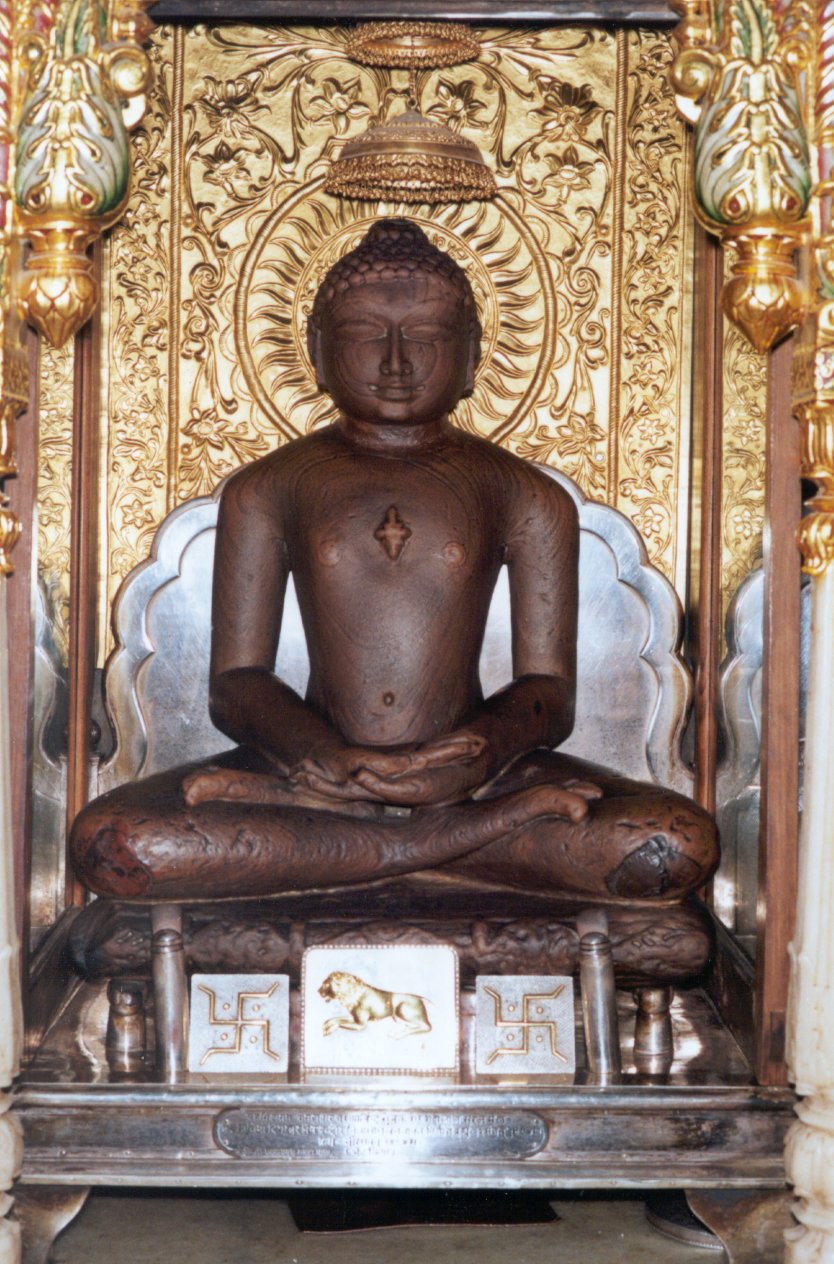(Jain Religion History)
• By this time, the old ritualistic Vedic tradition had gradually ceased to be a strong force.
• The freedom of thought allows fermentation of the new ideas and philosophic principles, leading to the establishment of numerous religious sects, which had never happened in India before.
• The important landmark in the history of Indian culture was the evolution of Jainism and Buddhism during the 600 B.C.
• Jainism and Buddhism have greatly influenced the society and culture of India. They stand against certain aspects of the pre-existing system of old ritualistic Vedic tradition.
• Ascetic orders and brotherhoods were the basis of both Jainism and Buddhism explained in their own way.
• The asceticism has its origin in the Vedic thought and Upanishads has been directly encouraging this by the recommending retirement to forests as essential to those who seek the highest knowledge.
• The Aranyakas are the products of hermitages of the forests.
Jainism
• Rishabhanath and Aristhanemia are the two Tirthankaras of Jainism mentioned in Rig Veda that proves the antiquity of Jainism.
• Rishabhanath had been mentioned an incarnation of Narayana in Vayu Purana and Bhagwat Purana.
• The nude sculpture of some Tirthanakara was also found at Harappa.
• The antiquity of Jainism is represented by a succession of twenty-four Tirthankaras.
• Rishabhnath was the first Tirthankara of Jainism.
• The traditions of Jainism say that he was a king and renounced the kingdom in favor of his son, Bharata, and became an ascetic.
• The name Bharatavarsha is after Bharata, the son of Rishabhanath as per the Puranic traditions.
• Parsvanath was the twenty-third Tirthankara, he renounced the world at the age of thirty and attained the enlightenment (perfect knowledge) after nearly three months of intense meditation and spent the remaining life as a religious teacher.
• He had lived 250 years before Mahavira.
Mahavira
Jain’s Mythology
• Vardhamana Mahavira was the twenty-fourth and the last Tirthankara of Jainism.
• Mahavira was born about 540 B.C. in the village Kunda-grama near Vaisali.
• He was the only son of Siddhartha and Trisala.
• Siddhartha was the head of famous kshatriya Jnatrika clan and Trisala was the sister of Chetaka, an eminent Lichchhavi noble of Vaisali.
• Chetaka’s daughter was married to the king of Magadha, Bimbisara.
• Mahavira was married to Yasoda and lived a life of a householder.
• After the death of his parents, Mahavira left his home at the age of thirty, and became an ascetic.
• Mahavira had practiced most rigorous asceticism for the next twelve years and attained kaivalya at the age of 42 years.
• As per the Jainism, Kaivalya is the supreme knowledge and final liberation from the bonds of pleasure and pain.
• After attaining Kaivalya, Mahavira came to be known as Mahavira and Jina or the conqueror and spent his remaining life in preaching.
• His followers came to be known as Jainas. Initially, they were designated as Nirgranthas, which means free from fetters.
• In 468 B.C., Mahavira passed away at Pawapuri at the age of 72 years. He spent 30 years of his life in preaching his teachings.
• Four doctrines of Parsvanath are:
o Non-injury to living beings,
o Speaking the truth,
o Non-possession of property, and
o Not stealing.
• Vardhaman Mahavira accepted four doctrines of Parsvanath and added Celibacy as a fifth one to them.
• Celibacy is the complete renunciation and free from any possessions.
• Mahavira asked his followers to discard even their clothes.
• The universe is eternal.
• The world is not created, maintained, or destroyed by a God, but it functions through a universal or eternal law.
• Jains did not deny the existence of God, but they simply ignored.
• The existence of the universe is divided into cycles of progress (Utsarpini) and declines (Avasarpim).
• It functions through the interaction of living souls (Jiva) and everything in the universe has a soul.
• The souls are found not only in the living beings like animals and plants, but also in stones, rocks, water, etc.
• The purification of the soul is the purpose of living.
• Only the pure soul after being released from the body resides in heaven.
• The soul, which has finally set itself free, rises at once to the top of the universe, above the highest heaven where it remains in an inactive omniscient bliss through eternity.
• It is known as ‘Nirvana’ in the Jainism.
• According to Jainism, salvation is possible only by:
o Deserting all belongings,
o A long course of fasting,
o Self-mortification,
o Study
• Jainism, therefore, says that the monastic life is essential for salvation.
• According to the Jaina tradition, the king Chandragupta Maurya has supported Jainism. He had accepted Jaina religion and abdicated the throne and died as a Jaina Bhikshu in the southern part of India.
• Two hundred years after the death of Mahavira (during the reign of Chandragupta Maurya), a terrible famine broke out in Magadha.
• Bhadrabahu was the chief of the Jaina community at that time.
• Bhadrabahu went to Karnataka with his followers and Sthulabhadra remained in Magadha as the in-charge of Jainism.
• Bhadrabahu convoked a council at Patliputra, in which the Jaina canon was arranged.
• Later in the 5th century A.D., the Jaina canon was further rearranged when the Jainas returned from south India. From where Jainism divided into two sects.
• Those who returned from southern India held that complete nudity is an essential part of the teachings of Mahavira while the monks in Magadha began to put on white clothes.
• Those who put on white robes known as ‘Svetambaras’ and those who were stark naked were called as ‘Digambaras.’

